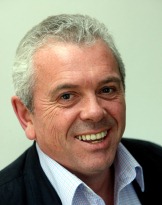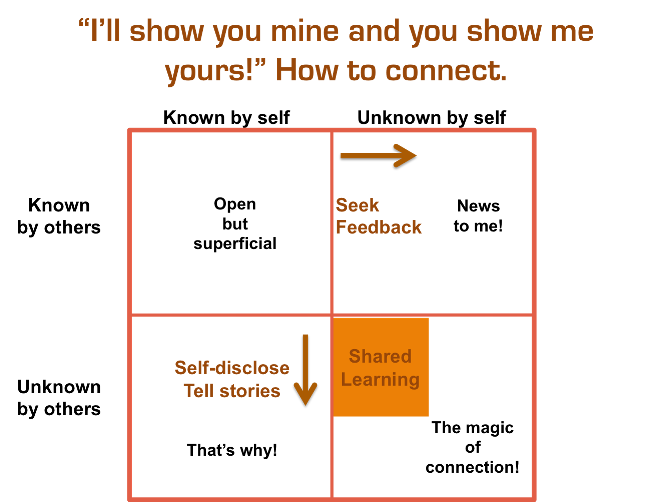 by beCause Global Associate David Hain, Director Transformation Partners — We live in a fast-moving, complicated world that frequently makes it a struggle to pause for breath, far less to make sense of it all. This US military acronym describes it perfectly — VUCA: volatile, uncertain, complex and ambiguous. We are hyper-networked and have incredible technology at our disposal, yet the very pace of technological advance creates confusion, exhaustion and suspicion in its wake. Customers and employees today are highly empowered, infinitely more demanding than previous generations and with an attention span that is significantly shorter because of the choices available to them from the device in their hand. Yet often they are cynical and change weary – wary of more failed promises of ‘certainty’ – when they need to be united and full of energy to keep up with the pace of change. The rules of engagement have changed – forever.
by beCause Global Associate David Hain, Director Transformation Partners — We live in a fast-moving, complicated world that frequently makes it a struggle to pause for breath, far less to make sense of it all. This US military acronym describes it perfectly — VUCA: volatile, uncertain, complex and ambiguous. We are hyper-networked and have incredible technology at our disposal, yet the very pace of technological advance creates confusion, exhaustion and suspicion in its wake. Customers and employees today are highly empowered, infinitely more demanding than previous generations and with an attention span that is significantly shorter because of the choices available to them from the device in their hand. Yet often they are cynical and change weary – wary of more failed promises of ‘certainty’ – when they need to be united and full of energy to keep up with the pace of change. The rules of engagement have changed – forever.
How to make sense of all this? Leadership is critically needed across the world, in business as in geo-politics. Where we need unity and empowerment, we frequently see fragmentation, confusion and misguided attempts at control. But how do leaders navigate the new rules of engagement in a VUCA world, if the world itself frequently doesn’t make sense and defies simple interpretation?
One effective answer is simple, and timeless! The new leadership paradigm is based on the power of connection. Learning how to connect, deepen and sustain is a business-critical capability for our times. And the critical currency that enables meaningful connection is trust. Trustful relationships are the only true sustainable advantage at individual, organisation and network level, described memorably by Roger Dean Duncan and Barbara Kimmel as “the operating system of every organisation and every relationship”.
No algorithms or rocket science are required to capitalise trust, but an authentic and sustained commitment to some universal truths is obligatory.
If can’t slow down the world to a comfortable pace, we can reframe VUCA in a positive sense, by recognising and practising some age-old principles. The principles of connection describe a world where leadership is seen as a relationship-based process rather than a positional one. Top-down management, based on fear and control, is a failed paradigm. We want leadership where we are Valued for who we are, understand and practice the Universal practices that create trust, creating Collaborative Communities based on making and multiplying Authentic connections.
Using these reframed principles we create a wellspring of what my friend Rob Peters, CEO, Standard of Trust, calls “Relationship Capital”. As the spring becomes a river, then an ocean, we really do have the potential to create sustainable advantage.
How do we develop and sustain meaningful connections, on every level, that breed loyalty, mutuality and collaborative commitment? How do we master the operating system? The answer lies in understanding how relationships work and using what we know about 1:1 connection to multiply our impact in teams, organisations and networks.
1:1 relationships deepen because of 2 factors working in combination to make a relationship transformational, rather than transactional. Factor 1- both parties need to find out about each other, let the masks slip a little, test the reaction, and loosen the mask a little bit more. They do this through a combination of self-disclosure (telling stories), questioning and deep listening. Factor 2 – both parties need to let the other know what impression they have made, providing and exploring feedback to develop awareness. They do this, ideally, through a combination of frankness and empathy. They always begin with one party taking the lead, hoping to invoke the law of reciprocity – ‘if I show you mine, will you show me yours?’ Connective leaders take that initiative, regularly and liberally.
 The magic really happens when each is sufficiently confident in the other to genuinely engage in shared discovery, taking both parties to a place beyond their own limited and ‘blinkered’ view. Win-win conversations such as this typically result in win-win-win outcomes for groups and organisations. They strengthen and deepen trust in the original relationship, and they add to the growth of a trust culture across the organisation as two more people recognise the benefits and skills of deepening trust. And trust culture is the secret sauce that makes the operating system work.
The magic really happens when each is sufficiently confident in the other to genuinely engage in shared discovery, taking both parties to a place beyond their own limited and ‘blinkered’ view. Win-win conversations such as this typically result in win-win-win outcomes for groups and organisations. They strengthen and deepen trust in the original relationship, and they add to the growth of a trust culture across the organisation as two more people recognise the benefits and skills of deepening trust. And trust culture is the secret sauce that makes the operating system work.
Where formal leaders in the organisation genuinely behave in this ‘other-centered’ way – with everyone – and create conditions and permissions where such transformational conversations become the norm, the benefits ramp up exponentially. Mark Schaefer puts it this way: “Connecting in a human way builds trust. Trust builds loyalty. And loyalty trumps everything.”
Such leaders are driven by socialised power rather than personal power. They eek to increase the resilience and creativity of their organisations by facilitating learning, They have learned to live with and give voice to the discomfort of not knowing all the answers. They look to engage rather than command. They recognise that all the answers can never be available and that they should instead promote better questions. They make a virtue of discomfort rather than pretending it doesn’t exist. Finally, they acknowledge and promote the huge benefits of technology and social media in helping to build communities of purpose and brand advocates among staff, partners and customers. But their real focus is on mind-sets, not tool sets.
By being more human, themselves, they create the only truly sustainable advantage by investing in Relationship Capital. And what they give, they gain!

